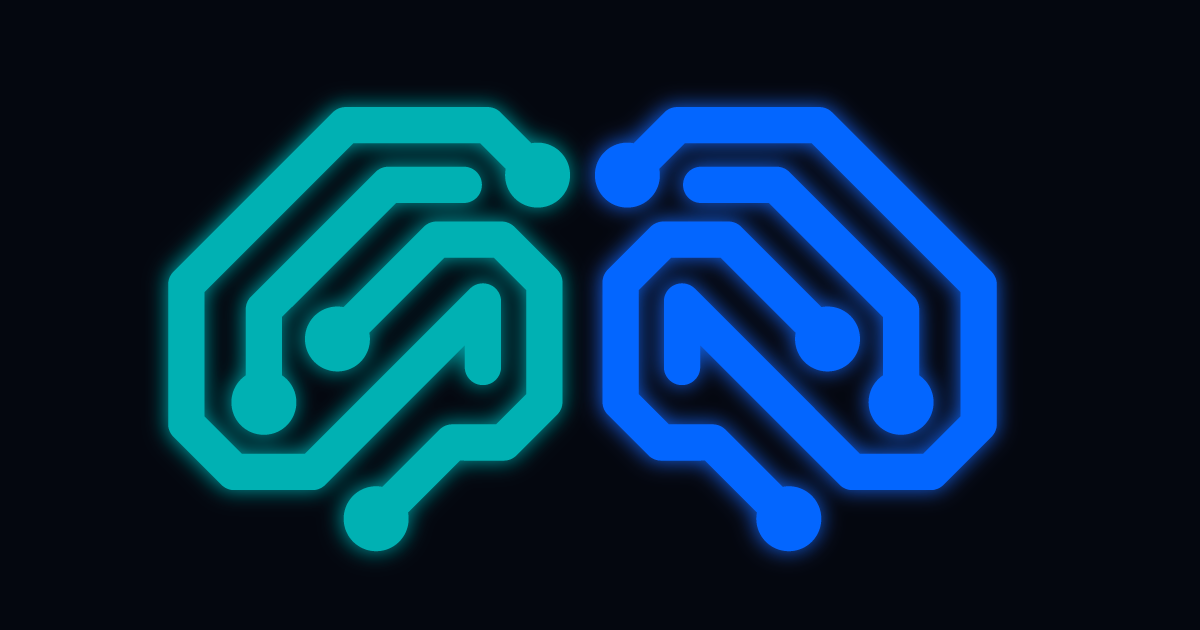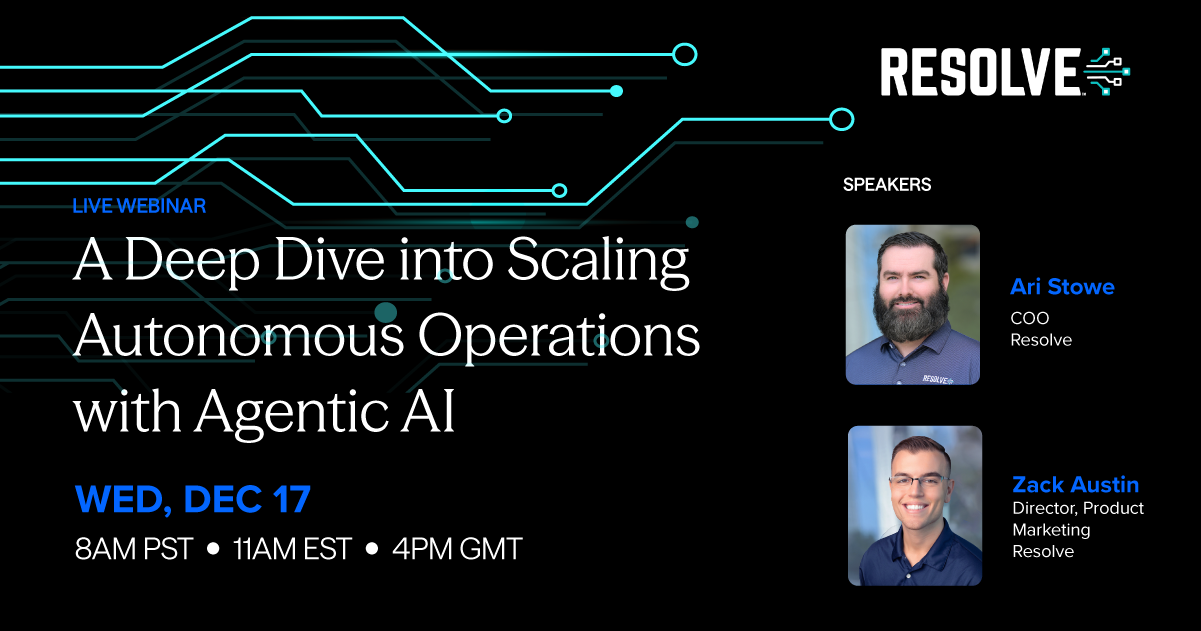
Process Orchestration For IT: Definitions, Differences, and Examples
Subscribe to receive the latest content and invites to your inbox.
From automating complex workflows to streamlining cross-functional operations, process orchestration plays a vital role in IT, enabling scalable, reliable, and responsive systems.
But with so many related terms floating around—automation, BPM, ETL, SOAR—it's easy to get lost in the jargon. What does "orchestrate process" mean?
Is it the same as automation? How does it compare to Business Process Management?
In this blog, we'll explain everything you need to know about process orchestration: what it is, how it works, how it differs from other business methodologies, and where it's making the biggest impact.
What Does Process Orchestration Mean?
To orchestrate a process means to coordinate and manage a series of tasks—often across different systems, teams, or environments—so that they run in a specific, logical sequence.
Unlike basic automation, which focuses on executing individual tasks, orchestration handles the broader flow: the triggers, conditions, dependencies, and handoffs between those tasks.
In IT, this could involve automatically spinning up infrastructure, deploying code, updating configurations, notifying teams, and logging outcomes—all as part of one orchestrated process.
Why Orchestration Matters
Process orchestration has emerged as a critical capability for organizations that prioritize agility and efficiency. It drives several key benefits:
- Efficiency: Reduces the need for manual intervention in complex workflows.
- Consistency: Ensures tasks are executed in the correct order, every time.
- Visibility: Provides insight into how processes run and where failures occur.
- Scalability: Supports growth by enabling processes to adapt dynamically to load, context, or business logic.
So, when we talk about process orchestration, we're really talking about building systems that run themselves—intelligently and at scale.
Now that we've discussed process orchestration, let's look at the tools that support it.
Role of a Process Orchestration Engine or Platform
A process orchestrator is the engine—or tool—that drives orchestration. It's the system responsible for defining, triggering, managing, and monitoring the flow of tasks across your infrastructure, applications, and teams.
Think of it as the conductor of your IT symphony: it ensures every component plays its part at the right time, in the right sequence.
While automation tools handle individual notes (i.e., specific tasks like restarting a server or sending an alert), the process orchestrator ensures the entire performance (the full process) plays out smoothly from start to finish.
5 Key Capabilities of a Process Orchestration Platform
To truly understand the value of a process orchestration engine or platform, it's important to look at the features that set it apart from simple automation tools.
A modern process orchestration platform isn't just about executing tasks—it's about managing complex, interdependent workflows with intelligence, flexibility, and control.
Below are the key capabilities that define a robust process orchestration platform for IT.
- Workflow Design: Allows teams to model multi-step workflows using visual builders or code-based definitions.
- Event Triggers or Scheduling: Supports automation based on real-time signals—such as an API call, system alert, or time-based schedule.
- Decision Logic: Executes tasks based on rules, dependencies, or branching logic (e.g., if task A fails, retry or take alternate path).
- Cross-System Integration: Connects to various tools and platforms (cloud, on-prem, third-party services) to execute tasks across domains.
- Analytics & Logging: Tracks executions, captures logs, and provides insights into successes, failures, and bottlenecks.
Whether it is managing a CI/CD pipeline, coordinating cloud infrastructure changes, or automating a multi-step incident response, a process orchestration platform is the backbone of reliable and scalable IT automation.
The Difference Between Process Orchestration and Automation
While the terms process orchestration and automation are often used interchangeably, they refer to two distinct—but complementary—concepts in IT operations.
Automation is the execution of a single task or a set of simple, predefined actions without human intervention. For example, automatically restarting a service when it crashes, or running a script to back up a database.
Process orchestration, on the other hand, is about managing and coordinating multiple automated tasks—often across different systems or departments—to achieve a larger objective. It provides the logic, flow, and decision-making that tie all the smaller automated steps into a cohesive process.
Orchestration vs Automation: Key Differences
For example:
- Automation: Automatically sending a welcome email to a new user.
- Orchestration: Provisioning a new user across systems—creating an account in Active Directory, setting permissions, assigning devices, and sending a welcome email.
In short, automation does the work, and orchestration ensures that work happens in the right order, under the right conditions, and with full visibility.
Process Orchestration in the Context of Business Process Management (BPM)
At first glance, Business Process Management (BPM) and process orchestration may seem similar—they both deal with workflows and efficiency.
However, they serve different purposes and operate at different layers of the business-IT stack.
BPM: Strategic Process Design and Optimization
Business Process Management focuses on modeling, analyzing, and improving business processes. It's a high-level, strategic discipline that helps organizations define how work should be done across people, departments, and systems.
BPM tools often provide visual process mapping, simulation, and governance features.
Process Orchestration: Execution and Integration
Process orchestration, by contrast, is about putting those business processes into action—especially the technical or system-driven parts.
Orchestration handles the actual flow of tasks and data across systems, ensuring that the right actions are executed in the right sequence, based on rules and triggers.
BPM vs Process Orchestration: Key Differences
BPM and process orchestration are not mutually exclusive—in fact, they often complement each other. You might use BPM to map out an onboarding process, and process orchestration to execute the IT tasks behind it (e.g., provisioning accounts, assigning hardware, configuring software).
How Process Orchestration Streamlines Incident Response Workflows
One of the most practical and impactful examples of process orchestration in IT is incident response—a high-stakes, multi-step process where speed, coordination, and accuracy are critical.
When a critical system outage or security threat is detected, a well-orchestrated incident response process might look like this:
- Trigger Detection: A monitoring tool (e.g., Datadog, Splunk, or BigPanda) detects abnormal behavior or downtime and generates an alert.
- Orchestration Begins: The process orchestrator receives the alert and automatically initiates a predefined response workflow.
- Notification and Escalation: Relevant team members are notified via chat or email. If no response within a set time, the workflow escalates the incident.
- Initial Diagnostics: Automated scripts are run to gather logs, check system health, and identify potential root causes.
- Remediation: The process orchestration platform can automatically remediate issues, i.e. restart services, roll back a recent deployment, or isolate affected infrastructure.
- Post-Incident Workflow: Once the issue is resolved, the orchestrator logs all actions, creates a postmortem log, records it in the IT ticket and notifies stakeholders of resolution.
Why Orchestration Matters
Without orchestration, each of these steps would be manual, siloed, and error-prone—leading to longer downtimes, miscommunication, and frustrated teams.
With orchestration, the entire flow is automated, monitored, and repeatable, ensuring rapid response and reducing the impact on customers and business continuity.
Incident response is just one example, but the principle is the same across many IT scenarios—whether it's onboarding new employees, managing cloud infrastructure, or deploying applications.
The Role of SOAR in IT Process Orchestration
A SOAR tool—short for Security Orchestration, Automation, and Response—is a specialized platform used in cybersecurity operations to streamline and automate threat detection, investigation, and response workflows.
SOAR tools are an example of process orchestration in a security context. They integrate data from various security systems (SIEM, firewalls, endpoint detection, etc.), apply automation to repetitive tasks, and orchestrate coordinated responses across tools and teams.
What Does a SOAR Tool Do?
To understand the power of SOAR tools, it helps to look at how they operate in the real world.
These platforms don't just automate individual security tasks—they orchestrate an end-to-end response across your entire security stack, helping teams act faster, smarter, and with greater consistency.
- Ingests Alerts: Collects security alerts from multiple sources like SIEM tools, email security platforms, or threat intelligence feeds.
- Automates Triage: Applies playbooks to automatically categorize, prioritize, and assign alerts.
- Coordinates Response: Orchestrates the appropriate response—blocking an IP, isolating a machine, revoking access—based on pre-defined workflows.
- Supports Human-in-the-Loop: Allows security analysts to step in when decisions require human judgment, while automating everything else.
- Documents Actions: Keeps a full audit trail of all automated and manual steps for compliance and reporting.
How SOAR Relates to Process Orchestration
SOAR is essentially process orchestration purpose-built for cybersecurity. It connects tools, automates decisions, and ensures incident response happens fast, consistently, and at scale—especially in environments where speed is critical and alert fatigue is a real problem.
Leading SOAR platforms offer integrations and automation capabilities tailored for security teams.
Why Process Orchestration Matters More Than Ever
Traditional approaches to managing workflows and operations can't scale, especially to meet the modern-day digital demands. Manual processes introduce delays. Siloed systems create blind spots. And simple automation—while helpful—often falls short in handling real-world, multi-step processes that span teams and tools.
That's where process orchestration steps in. It acts as the connective tissue that unifies your tech stack, enabling automated workflows that are responsive, intelligent, and scalable.
The Benefits of Investing in Process Orchestration
- Speed: Automate end-to-end workflows that react instantly to events, reducing downtime and manual lag.
- Consistency: Eliminate the variability of human execution and ensure the same outcome every time.
- Scalability: Build and maintain workflows that grow with your infrastructure and operational demands.
- Visibility: Gain full insight into processes from start to finish, improving troubleshooting, compliance, and optimization.
- Agility: Adapt quickly to changes in business needs, system configurations, or compliance requirements.
Whether you're managing incidents, deploying code, provisioning resources, or securing your environment, process orchestration gives your IT operations the structure and intelligence they need to perform at scale—without burning out your teams or introducing risk.
Next Steps: Choosing the Right Orchestration Strategy
Process orchestration isn't just a technical upgrade—it's a strategic shift in how your IT organization operates. As systems grow more interconnected and demands for agility increase, having a clear orchestration strategy is no longer optional—it's foundational.
But not every organization needs the same approach. Your ideal strategy depends on several factors:
- Current Maturity: Are you just starting with basic automation or already running complex workflows?
- Use Cases: Are you focusing on incident response, cloud provisioning, CI/CD, security operations, or all of the above?
- Tooling Ecosystem: What platforms, cloud providers, and integrations are already part of your stack?
- Team Capabilities: Do you need low-code tools for accessibility or prefer full control with code-driven orchestration?
Tips for Getting Started
Not sure where to begin with process orchestration? Start by focusing on practical, achievable steps that align with your goals and infrastructure.
Here are a few tips to help you lay the groundwork for a successful orchestration journey:
- Start Small, Scale Fast: Pick a high-impact use case and orchestrate it end-to-end. Learn, iterate, and expand.
- Align with Business Goals: Ensure orchestration efforts tie directly to outcomes like reduced downtime, faster releases, or improved security response.
- Evaluate Tools Carefully: Look for platforms that align with your architecture, offer flexibility, and have strong community or vendor support.
- Plan for Governance: Visibility, compliance, and auditability should be built in from day one.
Ultimately, the right orchestration strategy helps your organization move faster, operate smarter, and respond to change with confidence.
It's about building a foundation for IT that's not only efficient—but resilient, adaptive, and future-ready.
Sign up to watch how a powerful orchestration platform can make all the difference: Live Demonstration.






